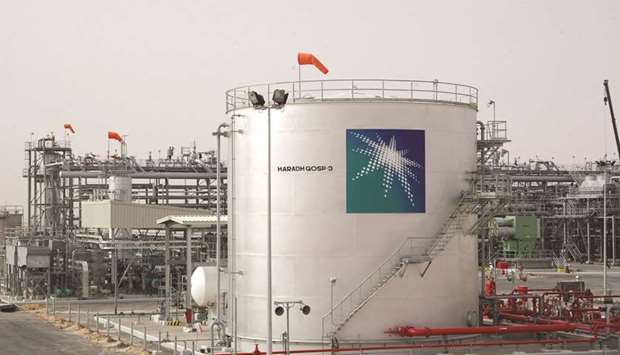For Saudi Aramco it doesn’t seemed to have worked the same way: the state-run energy giant’s downstream profits lagged well behind those at its closest competitors in the first half of 2017, according to accounting data reviewed by Bloomberg News.
The information – the first look inside Aramco’s financial performance since its nationalisation more than 40 years ago – shows the challenge the Saudi-owned company faces as it directs more spending into downstream with the aim of almost doubling refining capacity over the next decade. The lacklustre downstream profitability could dent one of the narratives that Aramco has always built about itself: that its best-in-class installations ensure superior performance. Yet investors looking into the company’s potential initial public offering may well take the refining unit’s financial history in their stride, focusing instead on the very profitable upstream business, which is responsible for pumping one in every 10 barrels of crude oil produced worldwide.
In the first half of 2017, Aramco made virtually all its profit in upstream, with downstream delivering just $842mn in net income, compared with a loss of $484mn in the first half of 2016. Still, earnings from pumping oil and gas meant the company as a whole reported net income of $33.8bn in the first half of 2017, up from $7.2bn in the same period of 2016.
By comparison, Shell made $5bn from refining and chemicals in the first half of 2017 and Exxon $4.7bn.
In large oil companies, the downstream sector typically performs well during downturns because crude prices tend to fall faster than fuels like gasoline and diesel, boosting margins. Trading, which often is housed inside downstream businesses, also does better in oversupplied markets. The information reviewed by Bloomberg didn’t make it clear why Aramco’s performance lagged peers.
The kingdom owns, either directly or through joint ventures, plants capable of processing 5.3mn barrels a day in Saudi Arabia, the US, South Korea, Japan and China. Of that, Aramco directly controls 3.1mn barrels a day, according to a bond prospectus for the company. Based on that number, the Saudi company is the world’s third-largest refiner, behind Exxon Mobil and China Petroleum & Chemical Corp, or Sinopec.
While the financial data didn’t explain why Aramco trailed other oil companies in downstream, state-owned energy producers often lose money refining crude and selling petroleum products domestically at below-market prices. Riyadh has significantly reduced fuel subsidies, increasing the amount consumers pay for gasoline and diesel, but prices remain low.
Asked to comment on the figures, Saudi Aramco said in a statement on Sunday: “This is entirely speculative. The company does not comment on its financial performance.” Aramco is a relative newcomer in refining. For decades, another company, called Saudi Arabian Marketing & Refining Co, or Samarec, controlled the bulk of the refining capacity of the kingdom. Aramco and Samarec merged in 1993 as then Saudi oil minister Hisham Nazer and former Aramco head Ali Naimi pushed to streamline operations.
Since the merger, Aramco has expanded heavily in downstream and plans to continue, recently announcing memorandums of understanding to expand a refinery in the kingdom with French oil company Total SA and build a petrochemical complex in the US Gulf of Mexico region.
Amin Nasser, Aramco’s chief executive, told Bloomberg TV in an interview last month that growing the downstream side of the business was a priority, rather than boosting the upstream segment.
Asked what Aramco would look like in 2030, he said, the company would be “shifting more to downstream, adding more value into the barrel through downstream.”



